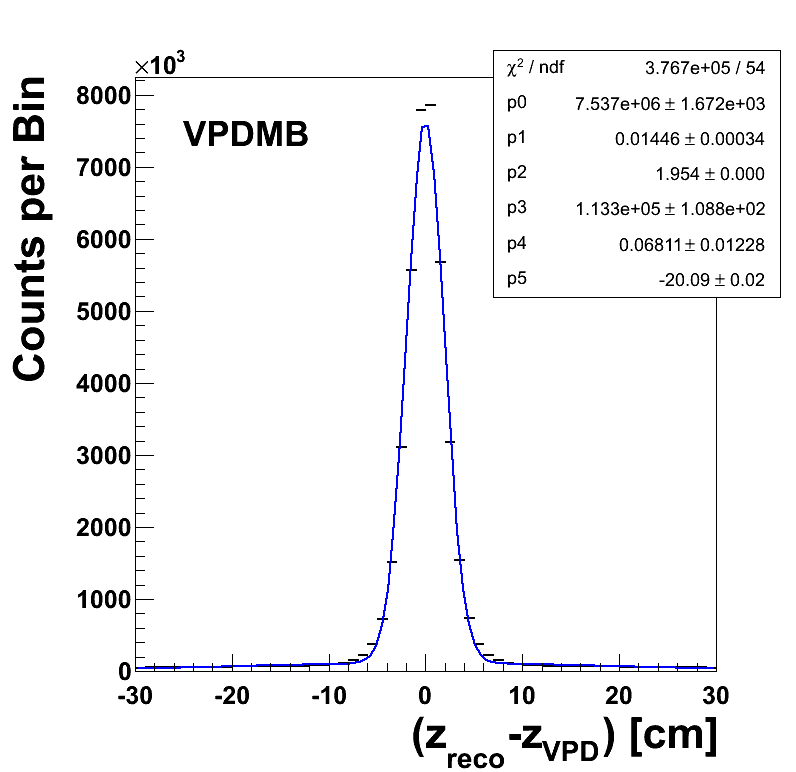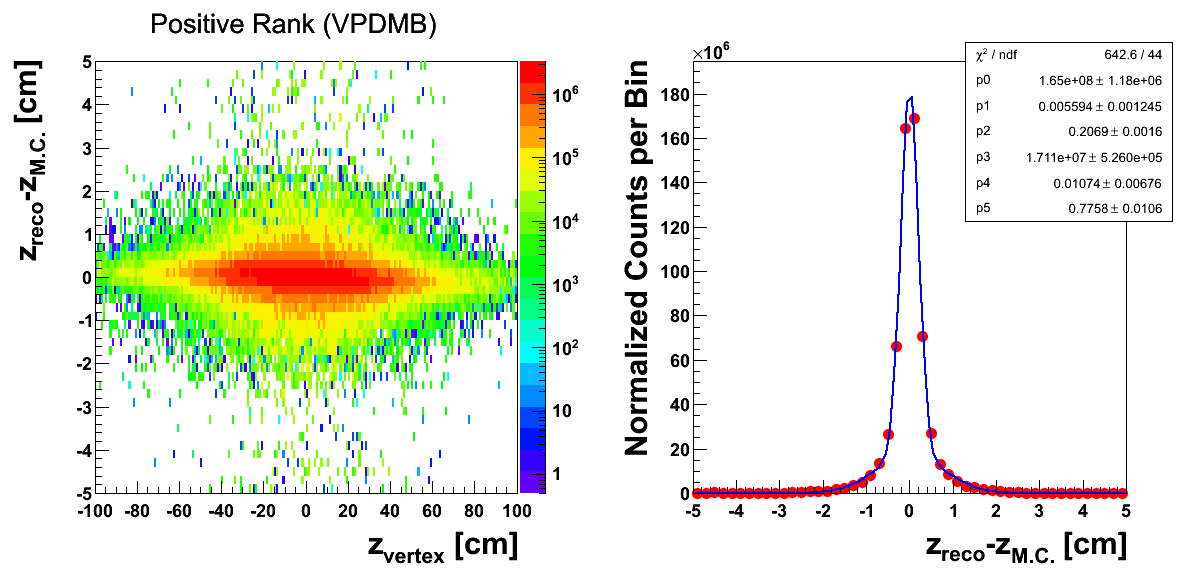- drach09's home page
- Posts
- 2022
- 2020
- June (1)
- 2019
- 2018
- 2017
- 2016
- 2015
- 2014
- December (13)
- November (2)
- October (5)
- September (2)
- August (8)
- July (9)
- June (7)
- May (5)
- April (4)
- March (4)
- February (1)
- January (2)
- 2013
- December (2)
- November (8)
- October (5)
- September (12)
- August (5)
- July (2)
- June (3)
- May (4)
- April (8)
- March (10)
- February (9)
- January (11)
- 2012
- 2011
- October (1)
- My blog
- Post new blog entry
- All blogs
Run-11 Transverse Jets: First Look at VPD Vertices
One remaining item I have not yet considered is the zvertex calculated from the VPD time bins. By requiring a match between the VPD vertex and the primary TPC vertex, it should be reasonable to assume a robust matching between the TPC vertex and the true vertex. Thus, I can eliminate my systematic uncertainties from matching to the wrong vertex in the VPDMB sample. I do not currently simulate the VPD, thus, I cannot evaulate this procedure in the simulation. However, these seem reasonable assumptions.
Figure 1

In Fig. 1 I show the correlation of TPC vertices (labeled "zreco") and VPD vertices. There is a strong correlation within ±10 cm. My current reconstructed vertex cut is ±50 cm, and I may revisit that, soon.
Figure 2

In Fig. 2, show Δzvertex integrated over zreco. I have fit the distribution with a two-Gaussian function. The "signal" distribution has a width of around 2 cm. Thus, it seems to me a cut of ±6 cm is reasonable.
Figure 3

For reference, in Fig. 3, I show the distributions of zreco - zthrown for the 2011 VPDMB embedding. One can see there is a strong correlation within ±2 cm. I have fit the zreco-integrated Δzvertex distribution with a two-Gaussian function. One can see the "signal" distribution has a width of around 0.2 cm; so a cut of ±2 cm is quite generous. To match such a cut in the VPD vertex matching, I would need to loosen my ±6 cm cut considerably, perhaps, to ±10 cm. Perhaps, this is even reasonable, though, it will not gain much in terms of statistics.
- drach09's blog
- Login or register to post comments
